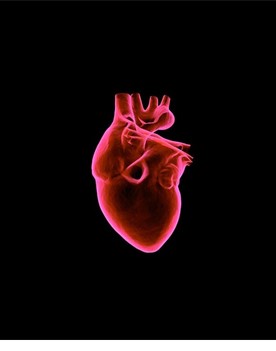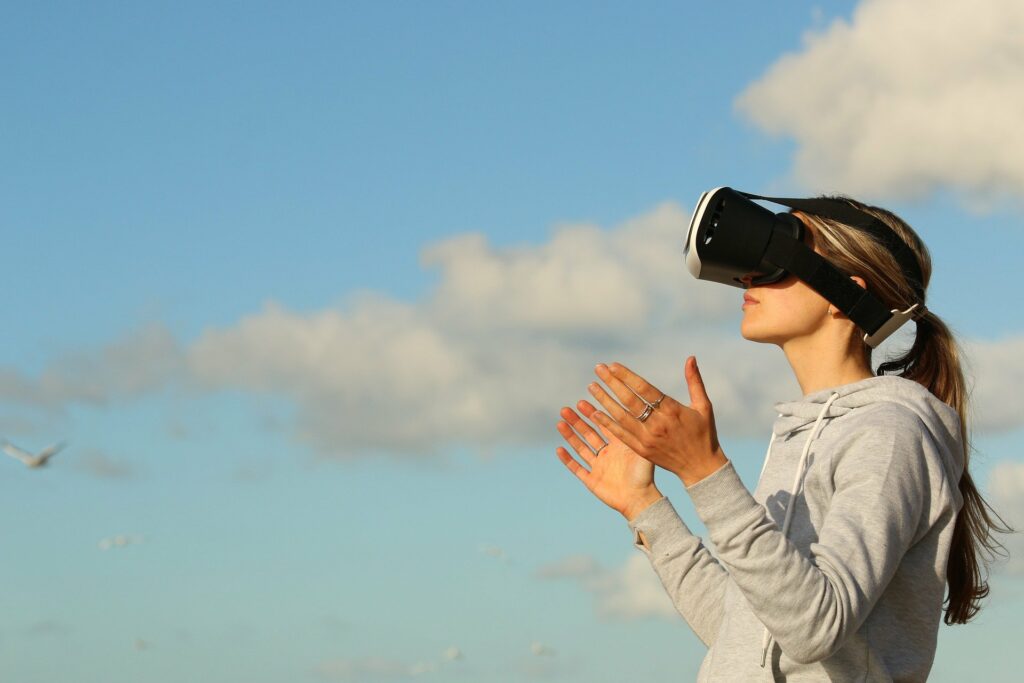
New opportunities for health – What the games industry has been working on for a long time is now also opening up new possibilities for medicine. VR technology is helping to impart knowledge and gain new insights. Medical students dissect cadavers or operate on the body while sitting at their desks. During operations, the tablet assists in visualizing and identifying pathologies. Furthermore, virtual reality enables new forms of therapy. Therapists accompany patients with anxiety disorders as they confront their fears in the virtual world. In recent years, the technology has become increasingly important and new areas of application in medicine are constantly being tested.
Virtual Reality in teaching
A new form of interactive learning is being established with virtual reality. Medical students, among others, benefit from this because they learn in virtual worlds with 3D models of the organs, bones and tissues. The vivid visualization allows students to gain insight into the physiological principles and internal processes of the human body. In virtual reality, students can not only see the visualized models, but interact with them in a new way. The represented organs can be viewed from all sides and rotated 360 degrees.

Micro-learning spots are located at important positions where students have to complete tasks or receive information through text, video, image and audio files. VR technology can also be used to practice surgical steps and techniques, which can be repeated as often as required. This is important for medical students, as they need to gain hands-on experience during their studies in order to ensure patient safety. Thus, medical students’ skills are specifically trained and improved without putting a patient at risk. In addition, students learn faster and more effectively on the simulator than by watching in an operating room. For example, Heidelberg University Hospital uses the touchscreen to dissect cadavers. But training in psychiatry also uses virtual worlds. The problem with psychiatric training is the lack of understanding of how the sick person feels. However, virtual reality can allow future doctors and nurses to recreate the patient’s perception in the simulator.
Virtual reality in practice
In everyday clinical practice, VR technology can hardly be imagined without, as it supports doctors in difficult diagnoses and invasive procedures. It visualizes the information and data for surgery planning that doctors receive before an operation. This complex data needs to be selected and interpreted. This is where virtual reality helps the surgeon by combining the data with images from computer tomography and compiling them into a realistic picture. Organs, bones and tissue are displayed three-dimensionally as a 3D model, giving the physician a picture of the patient’s pathology. The organ to be operated on can be viewed and magnified from any angle. With the help of virtual reality, the doctor has the possibility to intuitively get a picture of the pathology and the respective steps during the operation. The use of virtual reality has also increased in robotic surgery, where it supports the surgeon in precise operations and has a lasting impact on patient safety.
Virtual Reality Therapy
Treatment of anxiety and stress disorders
A new form of interactive learning is being established with virtual reality. Fighting phobias in virtual worlds – In the treatment of anxiety and stress disorders, virtual reality is used for a number of psychopathologies. Fear of flying, fear of heights, claustrophobia, arachnophobia, panic disorders or post-traumatic stress disorder are increasingly treated with recourse to VR.

Various clinics are already testing VR technology and confronting patients with a fear-inducing situation in virtual reality during therapy. Although the situations are not real, the patients’ fears are. Virtual therapy resembles the principles of conventional confrontation therapy. The patient is confronted with their fears and learns how to manage their emotions, reactions and anxieties. A therapist accompanies them and is in control of the conditions of the situation at all times. The treatment is gradual so that the patient can be introduced to their anxiety slowly and gradually. Individual regulation options ensure that the patient’s individual needs and progress are addressed. In therapy for fear of heights, patients are placed on a virtual platform at height. This is gradually adjusted in height so that the patient has depth perception when looking down. The same methodology is used in the therapy of phobia of flying or spiders. Patients with post-traumatic stress disorder (PTSD) are also confronted with traumatic situations. For example, scenes from the Iraq war are re-enacted for soldiers, with impressions such as explosions. The decisive advantage of this therapy method is that it is easy to implement. It is also less expensive and more controllable. Another option is to use the patient’s own VR goggles with a smartphone, in which the patient can treat himself or herself via an app, regardless of location. While this type of VR therapy will not replace a therapist, it can nevertheless accelerate the therapy process and free the patient from his or her fears more quickly. together!
Therapy for addicts
Another area of application is the therapy of addicts. Here, risk situations are trained in which the craving for the drug is great. In VR therapy, dry alcoholics have to go to a virtual pub where they practice refusing alcoholic drinks offered to them by an avatar. The same principle is used with nicotine addicts: they are exposed to places and situations where they normally reach for a cigarette. For example, waiting at bus stops or drinking a coffee is simulated without reaching for a cigarette. In the long term, therefore, new forms of behavior are practiced in virtual reality. The therapy of anorexia does not rely on confronting risky situations with the help of virtual reality technology. There, patients are confronted with artificially generated avatars based on measurements of their own bodies. The avatar’s height, weight and BMI can be changed so that patients are shown thinner and fatter versions of their bodies. The advantage is that you can show patients who are negative about your body a range of proportions in virtual reality. This is helpful because you are not directly judging their body with it. The results show that the anorexia patients do evaluate their bodies correctly and do not have problems with their own body perception. Nevertheless, it was shown that they prefer a very thin body as their desired body.
Therapy for pain patients
VR therapy for pain patients promises relief from acute pain. During the painful procedure of changing a bandage, patients are sent into a virtual snow landscape called SnowWorld. There, they walk through snowy landscapes, observe penguins or polar bears, and can throw snowballs. The effect is similar to a dose of morphine and reduces pain by up to 50%. The basic&Shy;idea is to engage patients in a different reality and provide distraction from pain. Doctors have found that trips to virtual worlds prevent not only pain but also depression in long-term patients.
Conclusion
Overall, the use of VR technology shows great advantages in its use in medicine. In teaching, as in practice, they complement conventional methods and promote patient safety. In therapy, the lack of disturbing factors in the virtual environment and the gradual regulation in confrontation therapy stand out. In addition, environments can be created that look very natural. It is an open question how virtual worlds will impact healthcare in the future. So far, however, the technology has become very well established in medical practice and is indispensable in some areas.
Matching topics: